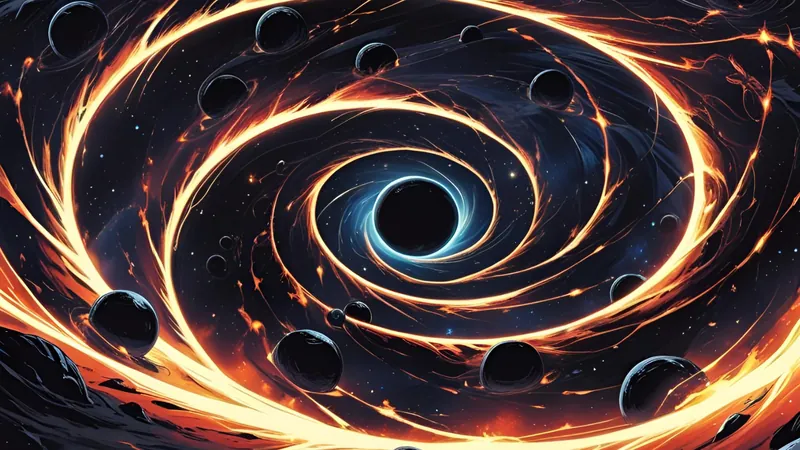
Astronomers Discover a Cosmic Monster in an Early Galaxy: Is it Linked to the Big Bang?
2025-07-09
Author: Nur
The James Webb Space Telescope (JWST) has made an astonishing discovery: a supermassive black hole in a pristine galaxy dating back just 700 million years after the Big Bang, hinting at the origins of these celestial giants.
This groundbreaking observation suggests that the early universe’s supermassive black holes may have formed from primordial black holes, which emerged from density fluctuations shortly after the Big Bang, rather than from the remnants of massive stars.
The black hole in question, known as A2744-QSO1 (QSO1), boasts a mass roughly 10 million times that of our Sun and constitutes about 10% of its host galaxy's total mass, an astounding ratio compared to local supermassive black holes that often represent only 0.005% of their galaxy's mass.
What makes QSO1 particularly intriguing is its low metallicity, indicating that it has experienced minimal star formation and supernova explosions, crucial for creating heavier elements. Astrophysicist Roberto Maiolino from the University of Cambridge states, "With oxygen levels below 1% of solar value, QSO1 is one of the most chemically unevolved galaxies we’ve ever observed."
This unique combination of attributes challenges traditional theories of black hole formation, as it suggests that large black holes can develop in a less evolved environment without requiring extensive stellar deaths.
Traditionally, astronomers assumed that black holes formed from stellar remnants and gradually grew by consuming surrounding gas. However, the JWST findings present a puzzle: how did such massive black holes appear so swiftly in the cosmos?
One theory posits that these black holes may have originated from direct collapses in gas clouds, creating protostars that quickly became massive black holes, potentially up to 100,000 solar masses. Another suggests that dense star populations within early galaxies merged, giving rise to intermediate-mass black holes.
Yet another scenario involves black holes growing beyond the so-called Eddington limit, suggesting they could undergo bursts of 'super-Eddington' accretion, rapidly increasing their mass in the process.
Innovatively, astronomers are revisiting the idea of primordial black holes, theorized to have formed almost immediately after the Big Bang. This scenario posits that these early black holes could have created the framework for the galaxies we see today.
Maiolino emphasizes that these primordial black holes could offer a more coherent explanation for JWST’s observations of QSO1, illustrating how early black holes might have emerged and evolved.
Recent studies align with these ideas, asserting that primordial black holes may have existed before the first stars, functioning as the early seeds for the supermassive black holes observed today.
While the evidence is compelling, researchers acknowledge that further modeling and observations are necessary to confirm these theories. As astronomers continue to scrutinize QSO1 and its surroundings, they hope to unlock the mysteries of black hole formation and the evolution of galaxies in the early universe.
With ongoing advancements in technology and deeper explorations of the cosmos, the quest to understand these cosmic giants and their origins is more tantalizing than ever.

 Brasil (PT)
Brasil (PT)
 Canada (EN)
Canada (EN)
 Chile (ES)
Chile (ES)
 Česko (CS)
Česko (CS)
 대한민국 (KO)
대한민국 (KO)
 España (ES)
España (ES)
 France (FR)
France (FR)
 Hong Kong (EN)
Hong Kong (EN)
 Italia (IT)
Italia (IT)
 日本 (JA)
日本 (JA)
 Magyarország (HU)
Magyarország (HU)
 Norge (NO)
Norge (NO)
 Polska (PL)
Polska (PL)
 Schweiz (DE)
Schweiz (DE)
 Singapore (EN)
Singapore (EN)
 Sverige (SV)
Sverige (SV)
 Suomi (FI)
Suomi (FI)
 Türkiye (TR)
Türkiye (TR)
 الإمارات العربية المتحدة (AR)
الإمارات العربية المتحدة (AR)